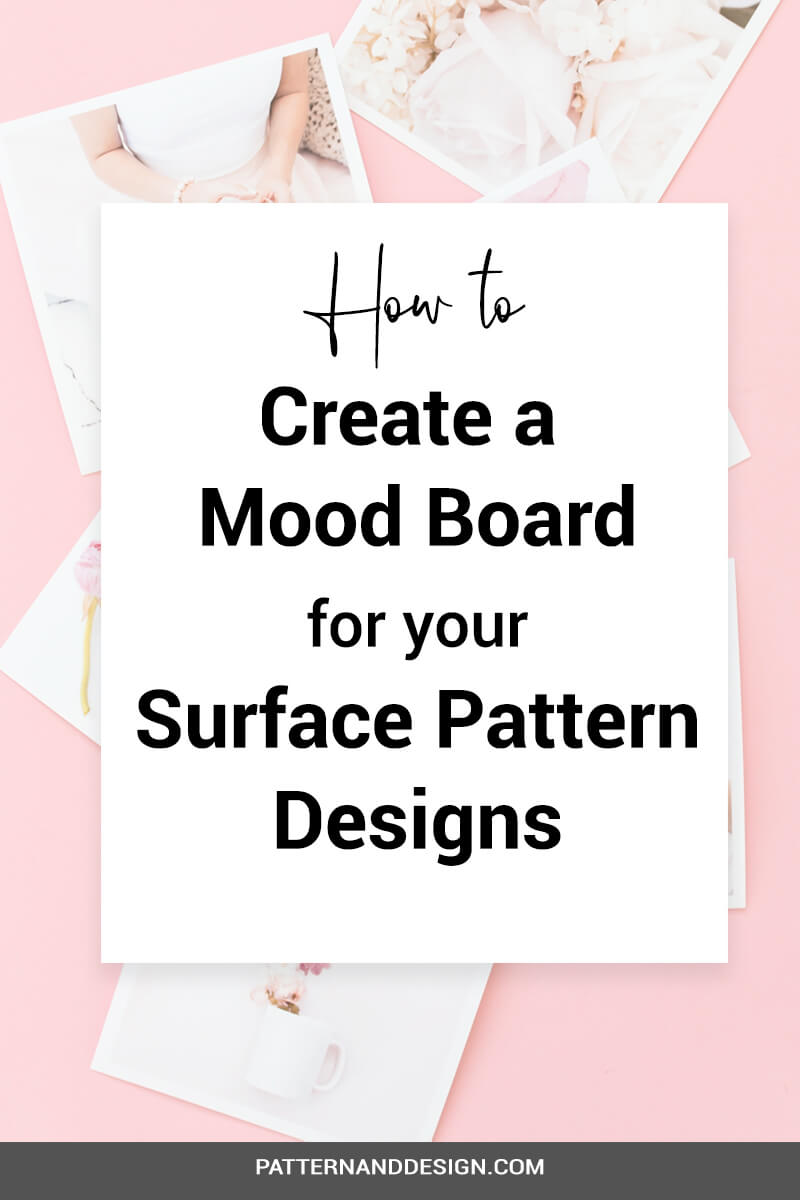learn about all things surface pattern design including the creative design process, being a successful creative entrepreneur & stepping into the mindset of a successful designer
welcome to the pattern design blog
blog
The
Categories
Popular
How to create a mood board
Mood boards are a great reference point for starting your surface pattern designs. They enable you to visually communicate your ideas and allow you to collate all your inspiration together in one place. There are no rules for creating mood boards but they should convey your theme, colour and motif direction.
If you are working for a client then a mood board allows them to get a sense of your design direction so you can check if you are on the right track. It saves time if you know whether you are heading in the right direction at this beginning stage. If you’re not, at least you haven’t spent a lot of time developing ideas that your client won’t like.
For those who set their own briefs, mood boards allow you to formulate a clear direction as a starting point for creating your designs.
If you’re having trouble knowing how to start a mood board, you can learn step by step how to create mood boards, find inspiration and create your own mood board templates here.
Or sign up for my FREE Illustrator mood board templates
What to include on your mood board:
1. Inspirational images
They could be photos that you’ve taken, magazine images or images from books.
2. Colours
Your mood board should show a strong sense of the colour palette you intend to use. This could be shown through just the images you choose or you could include colour chips also.
3. Motifs
You should include images or reference material that show what sort of motifs, design ideas and themes you will be using e.g. if it’s a geometric design you will show some geometric elements
What to consider when creating your mood board:
1. Orientation
You could create a vertical or horizontal mood board. This will depend on the images that you choose and what you feel best conveys your ideas
2. Positive and negative space
It’s important to consider not only the images or items you are displaying on your mood board but also the background space. Depending on the look you are after, leaving some background areas without images on your mood board can give it some breathing space
3. Focal Point
Having a focal point on your mood board is important. This can be created through image size or colour. It’s important for the eye to be able to initially focus on one element and then be lead around the board. If there is no focal point, your mood board will appear cluttered and will make it harder for the viewer to coherently look at your images.
4. Balance
Make sure all elements on your mood board are balanced. Think about how colour, shape and size all work together. For example, you don’t want all the decorative and colourful items on one side of your board and on the other side have only plain, simple items. Also, keep in mind that heavier items always looks better when they’re placed at the bottom of the board. It makes the mood board feel grounded.
5. Theme
Your theme, colour and motif direction should be clear. Anyone looking at your mood board should have a good sense of what design direction you are heading. If your theme is pretty, pink florals then it wouldn’t make sense to have strong, graphic geometrics.
You can create your mood board in Illustrator or Photoshop if you have the digital skills but if not, mood boards can be created just as beautifully by hand.
Be creative and have fun with it!
P.S. To help you get started, you can learn step by step how to create mood boards, find inspiration and create your own mood board templates here or you can check out my FREE Illustrator mood board templates by signing up below

Want to create another revenue stream by turning your art into surface pattern designs?
Get the free guide
Get my FREE Surface Pattern Design Starter Guide